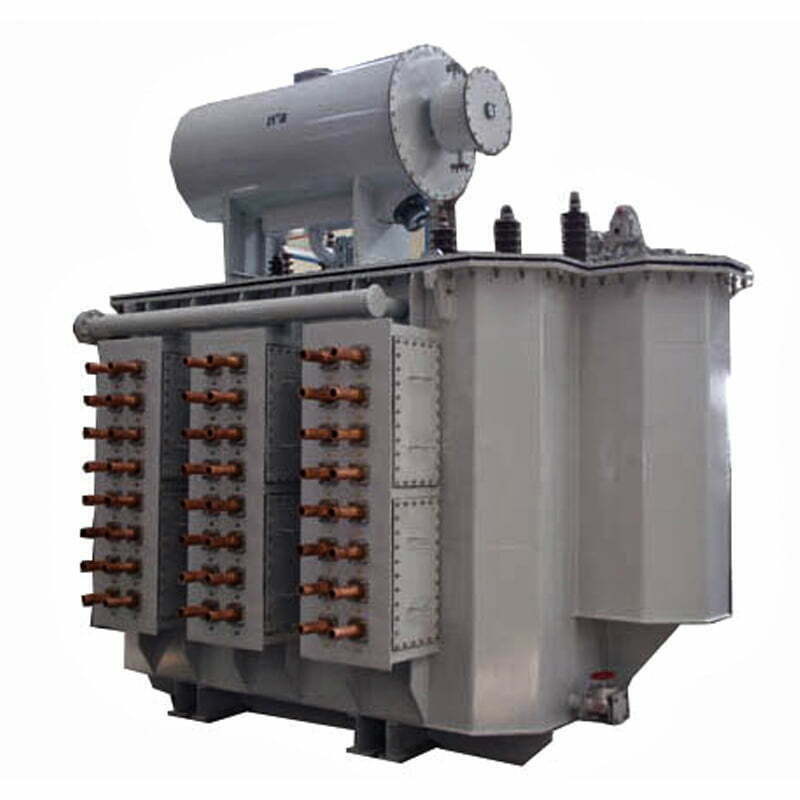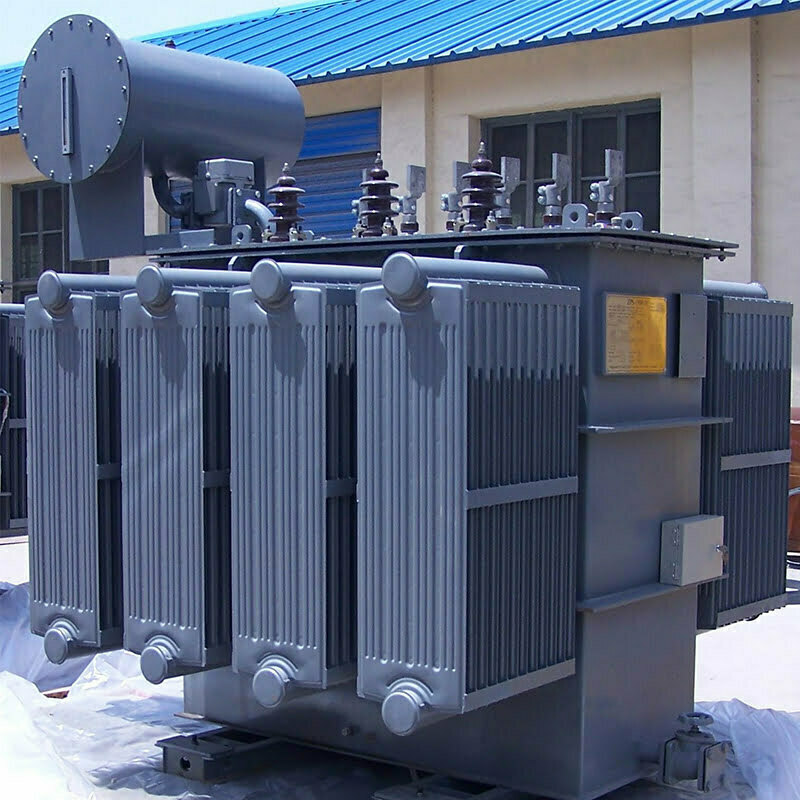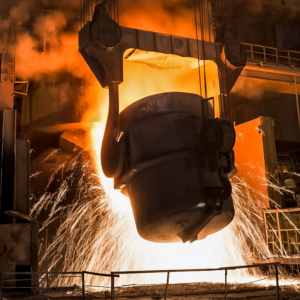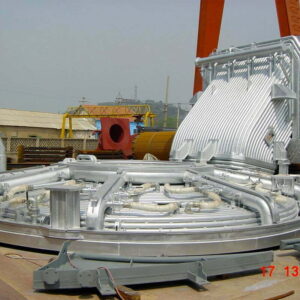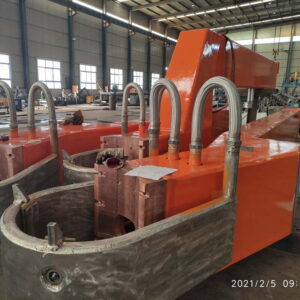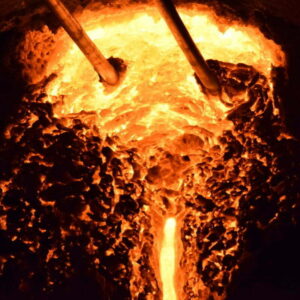Description
Submerged Arc Furnace Transformer mainly outputs power through the secondary copper tube, and the load fluctuation is larger than the ordinary one.
The submerged arc furnace is a general term for various SAF such as ferroalloy furnace, calcium carbide furnace, yellow phosphorus furnace, electric melting steel furnace, boron carbide furnace, cyanide furnace and so on.
It mainly used for reducing smelting ore, carbonaceous reducing agent and other raw materials.
Features
The load of the submerged arc furnace transformer is continuous and stable, the impedance voltage is low, the number of voltage regulation stages is large, the step difference is small, and the overload capacity is strong.
It can be divided into two types: on-load and non-excitation voltage regulation. Generally, the first few stages have constant capacity output, and the latter stages have constant current output.
Due to the improvement of the production process of the submerged arc furnace, it also has a great impact on the structure of the transformer.
For example, the development of fully enclosed smelting has prompted the transformer to be more than 15000kVA,
designed as a single-phase transformer, and the water-cooled tube (adjustable copper tube) side Outlet, on-load voltage regulation, unified cooling structure.
Parameters
Submerged arc furnace Transformer is mainly divided into six parts: iron core, body, winding, assembly, fuel tank, and accessories.
(1) Iron Core:
In terms of materials, we choose 30Q130 silicon steel sheets from WISCO or 30Z130 silicon steel sheets from Nippon Steel Co., Ltd.
These materials are basically the same as those used in developed countries.
In the structure, a full miter seam sheet type is adopted, and the upper and lower clips are connected by a pull plate structure of low-magnetism steel plate.
The previous square iron structure is changed, so that the iron core has no holes and no defects, and the magnetic flux density of each section of the iron core is consistent and there is no distortion.
In the shearing process, the German imported Georg shearing line is used, and the shear burr is controlled to <0.02mm (standard <0.05 is a qualified product).
The length tolerance per meter is <0.2mm, thereby increasing the lamination coefficient and reducing the gap between the seams, avoiding.
The iron core is overheated locally, and the product noise, no-load loss and no-load current are reduced.
(2) Body:
All the wood parts of the body are laminated wood, which improves the rigidity of the lead frame.
The upper and lower pressing plates are pressed with cardboard or epoxy resin molding, compared with iron pressure plate,
to increases the insulation distance of conductor to ground, and can reduce the size of “window height”.
The primary and secondary main insulation adopts imported cardboard, which increases the main insulation strength, and the multi-coil adopts a whole set, which improves the reliability of the product.
The drying of the device body adopts the vapor-phase drying equipment made in Norway, which is thoroughly dried without damaging the insulation, and has the function of washing the device body.
(3) Winding:
The oxygen-free copper magnet wire has little progress from the material.
Our company mainly controls its ρ20℃<0.017241.
In addition, it mainly controls the material and tightness of its paper-wrapped insulation.
The purpose is to make the coil have better axial and radial stability as much as possible.
The coil adopts small oil gap, inner and outer oil shield, guide cooling, and cardboard tube structure, which makes the structure compact and has strong thermal stability and loss.
For large on-load voltage regulation and 110kV level products, the “8”-shaped coils used are all wound and formed at one time, which increases the coil strength and reduces the eddy current loss.
(4) Final Assembly:
After the body is dry, the winding relaxation is compressed by hydraulic equipment and has achieved good results.
The use of vacuum oil injection reduces the air bubbles in the product winding, reduces the partial discharge, and increases the product life.
The use of new anti-aging sealing materials has improved the original leakage problem.
All control lines such as: gas relay, signal thermometer, resistance thermometer, pressure relief valve, magnetic oil gauge, CT, etc. are all introduced into the junction box on the box body, and the overall appearance of the transformer has been improved.
(5) Fuel Tank:
The fuel tank adopts the folding plate type, minimizes the welding seam, increases the strength and performs positive and negative pressure tests to ensure the reliability of the product seal.
Use low-magnetic steel sheets or magnetic shields where appropriate to reduce additional losses on the box walls due to the magnetic field of the bus conductors.
This work has achieved very good results in anti-seepage and loss reduction.
(6) Accessories:
The main accessory water cooler is YS1 oil-water cooler, or stainless steel spiral plate cooler.
The on-load tap-changer adopts “M-type” or “V-type” from domestic advanced manufacturers.
In addition to the remote display, there is also a remote control interface.
If necessary, an online oiling device can be added to the switch.
The submerged arc furnace transformer oil is naphthenic anti-aging transformer oil produced in Karamay, Xinjiang, and the protection of the oil is a fully enclosed structure (ie, the pressure relief valve is equipped with a diaphragm oil conservator structure).
Submerged Arc Furnace Transformer Maintenance
1. It’s necessary for the hanging core to be transported over a long distance after the product arrives.
The main solution involves the loosening of fasteners during transportation and the user’s acceptance of the manufacturer’s products.
We believe that it is necessary to inspect and replace those mechanical wear parts according to the original overhaul cycle.
2. Such as pumps and other moving parts, but for a relatively static transformer, it’s not necessary to hang the core for a long time.
Only monitoring the change of the gas chromatographic analysis value of the oil is enough to grasp the situation of the device body,
which can save maintenance costs and reduce the impact of the hanging core on the body of the device. and oil pollution.
As a manufacturer of submerged arc furnace transformers, HANI Metallurgy has the following four product concepts:
1: The empty and load losses of the product should be low;
2: The product reliability is better and the service life is longer;
3: There is a certain overload capacity (overload 20% long-term use);
4: complete supporting and as little maintenance as possible.
According to the requirements of users, as well as various order feedback and usage conditions,
we have eliminated previous products and designed and produced transformers with different requirements, so that users have achieved good economic benefits.

